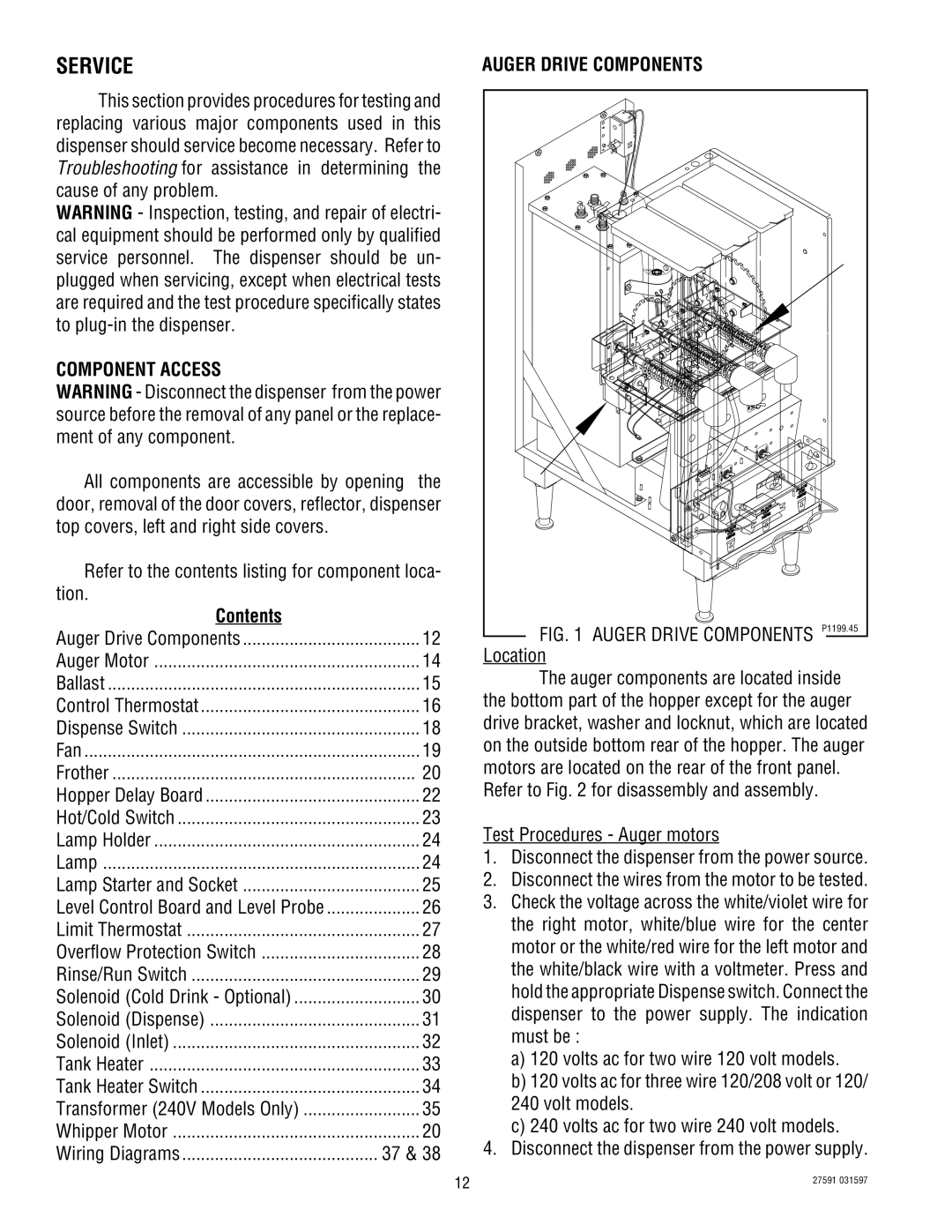HC-2 HC-3 specifications
The Bunn HC-2 and HC-3 are high-performance commercial coffee brewers designed for cafes, restaurants, and institutions that prioritize quality, efficiency, and reliability. Renowned for their exceptional brewing capabilities, both models come with a range of features that cater to the demanding needs of coffee enthusiasts and professionals alike.One of the core characteristics of the Bunn HC-2 and HC-3 is their brewing technology. These machines utilize a patented steeping mechanism that allows for optimal water temperature and contact time, extracting the finest flavors from the coffee grounds. The precise temperature control, maintained at a consistent level, ensures that every cup of coffee is brewed to perfection. Furthermore, the machines have an impressive brew capacity, with the HC-2 capable of brewing up to 3.8 gallons per hour, while the HC-3 can brew up to 5.3 gallons per hour, making them ideal for high-traffic environments.
Another significant feature of the Bunn HC-2 and HC-3 is their ease of use. The user-friendly interface allows baristas to quickly set brew cycles and adjust brewing parameters to suit different coffee types. Both models are designed with a sleek, ergonomic aesthetic that fits seamlessly into any workspace, while also being built with durable materials to withstand the rigors of daily use.
In terms of efficiency, these brewers come equipped with energy-saving technology. The automatic warmers on both machines adjust the heat output based on the coffee’s temperature, reducing energy consumption without compromising quality. Additionally, the compact design of these units means they occupy minimal counter space, making them suitable for both small and large establishments.
Maintenance is straightforward with the Bunn HC-2 and HC-3, as they feature a self-diagnostic system that alerts users to any potential issues. This feature minimizes downtime and ensures the longevity of the equipment. Furthermore, the brewing components can be easily accessed for cleaning and maintenance.
In summary, the Bunn HC-2 and HC-3 stand out in the commercial coffee brewing market with their advanced brewing technology, high capacity, user-friendly design, energy efficiency, and ease of maintenance. These features make them a preferred choice for anyone looking to deliver high-quality coffee consistently, ensuring that businesses can satisfy even the most discerning coffee drinkers. With Bunn’s commitment to innovation and quality, these brewers continue to set the standard in the coffee equipment industry.

